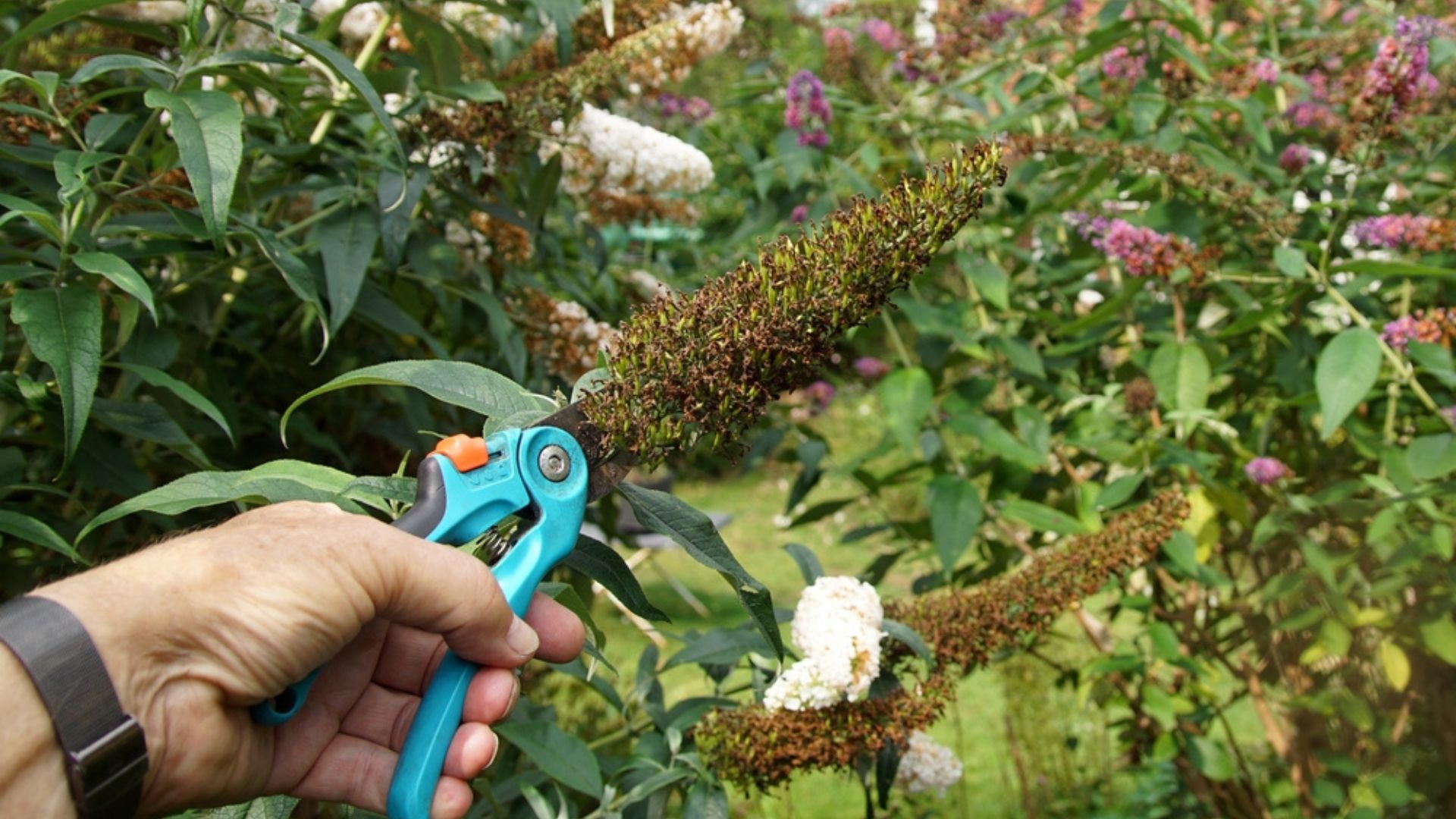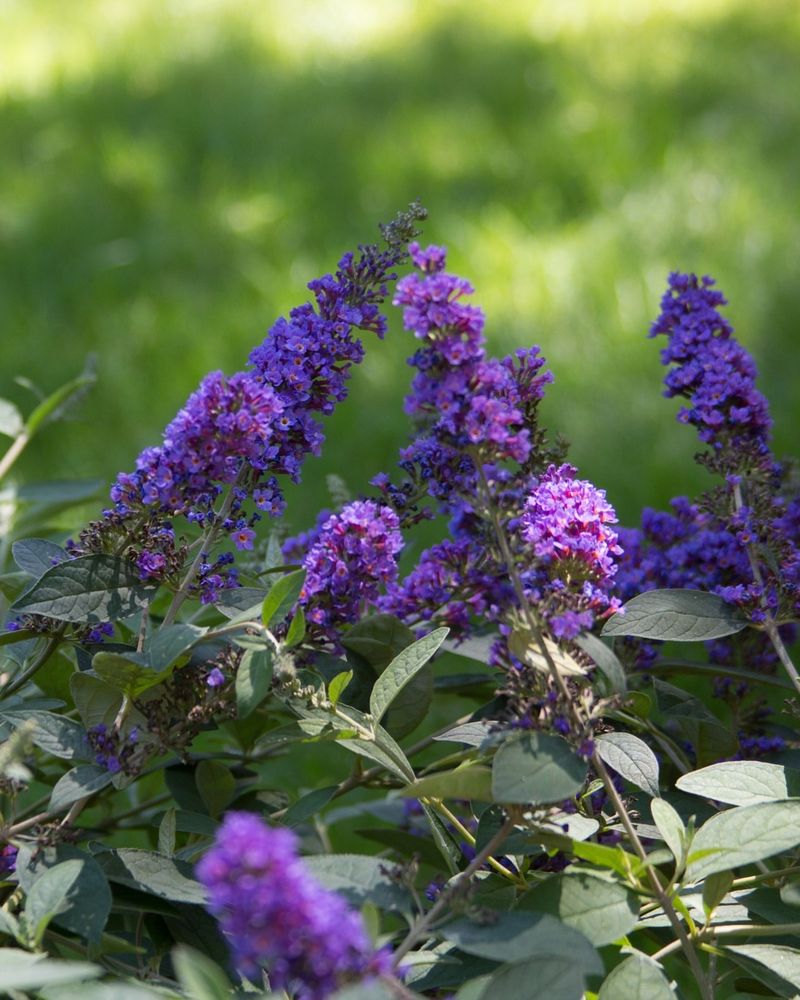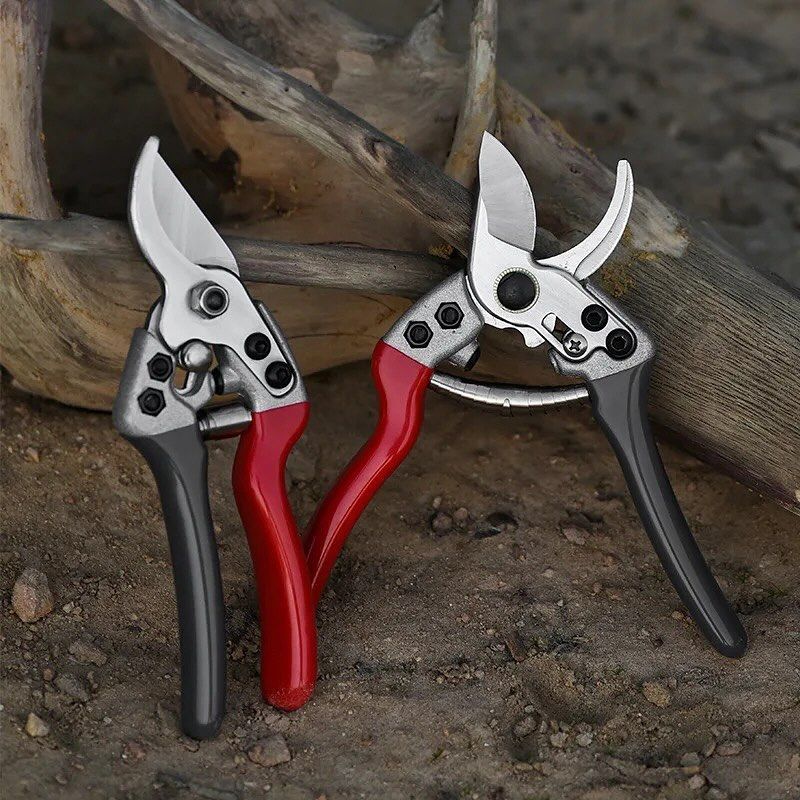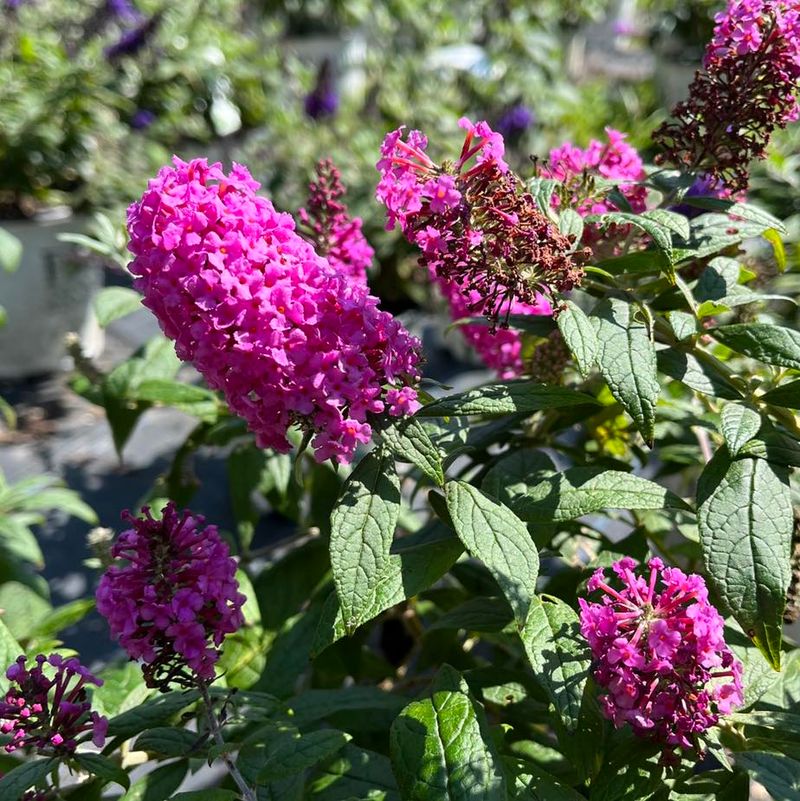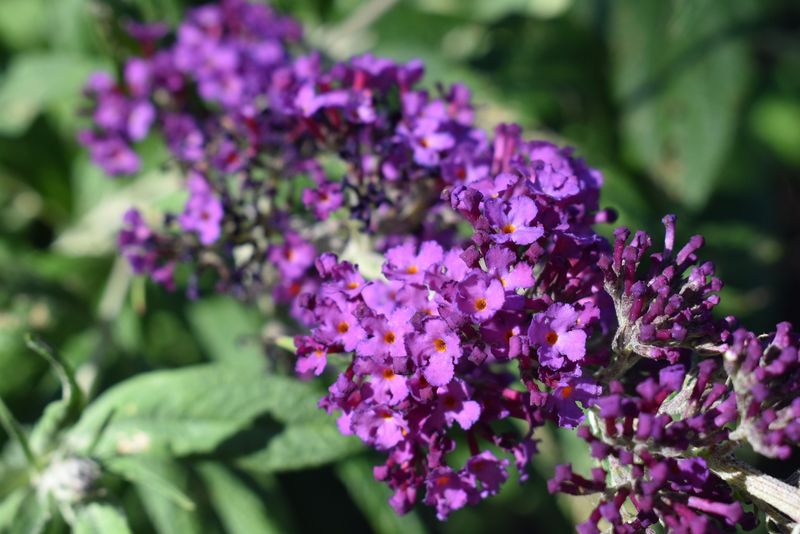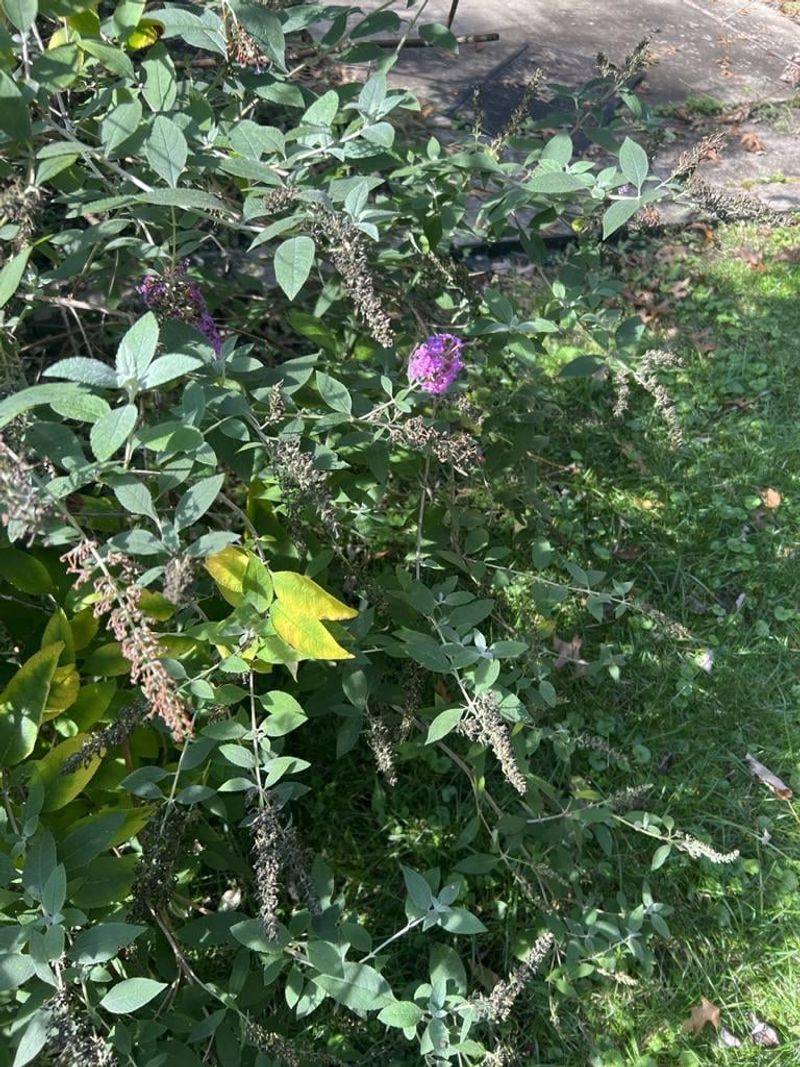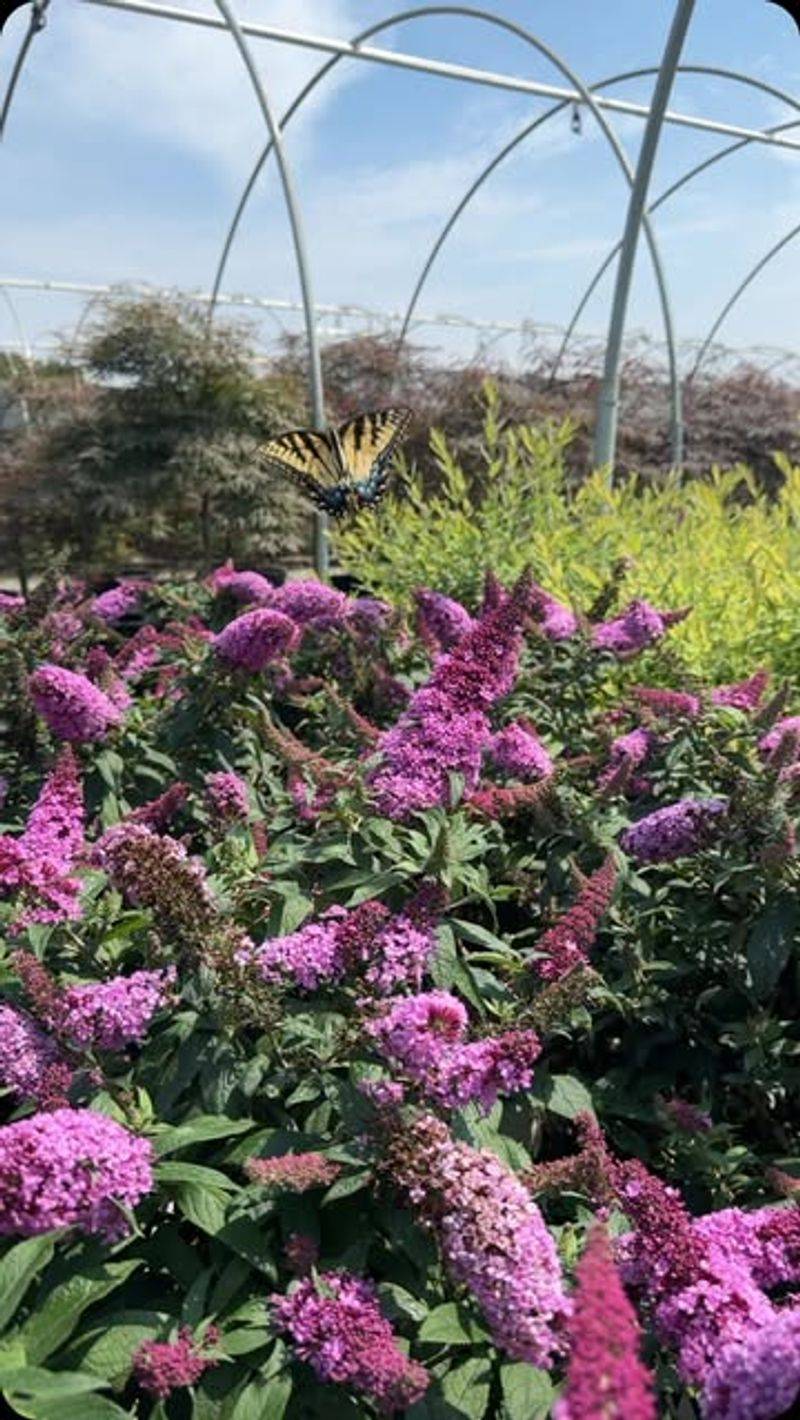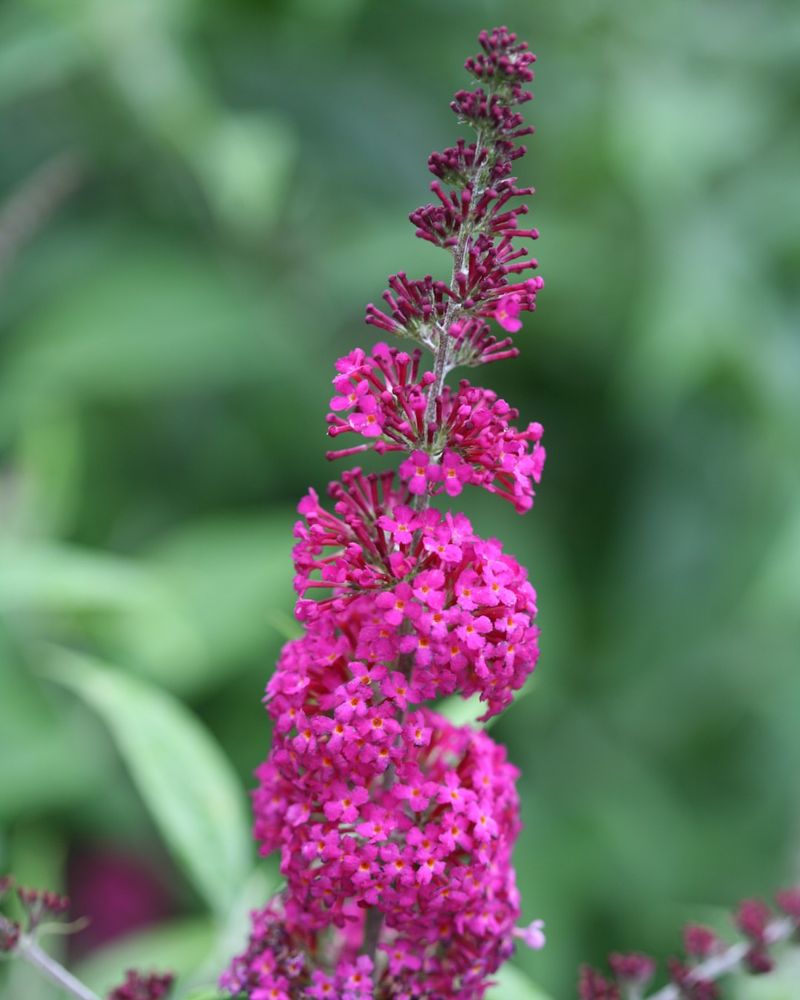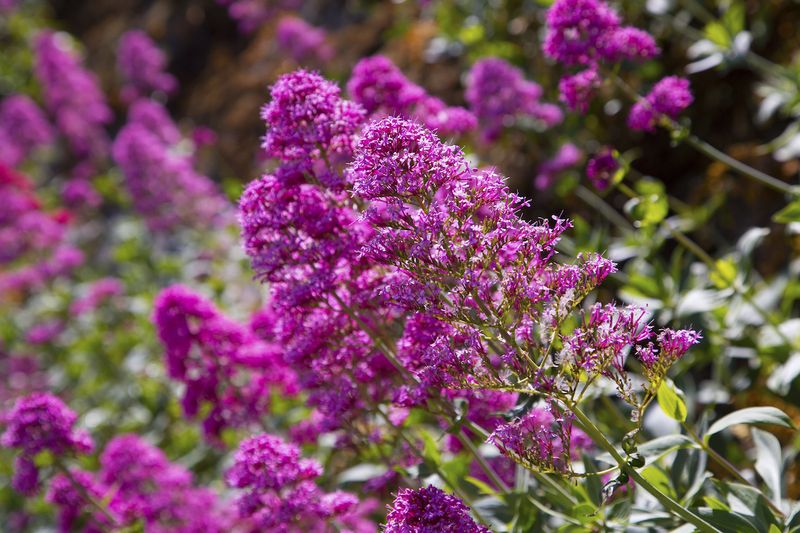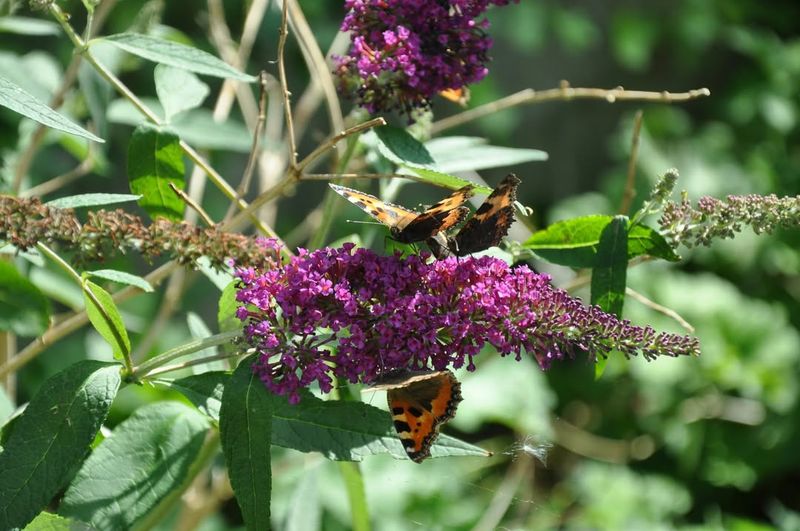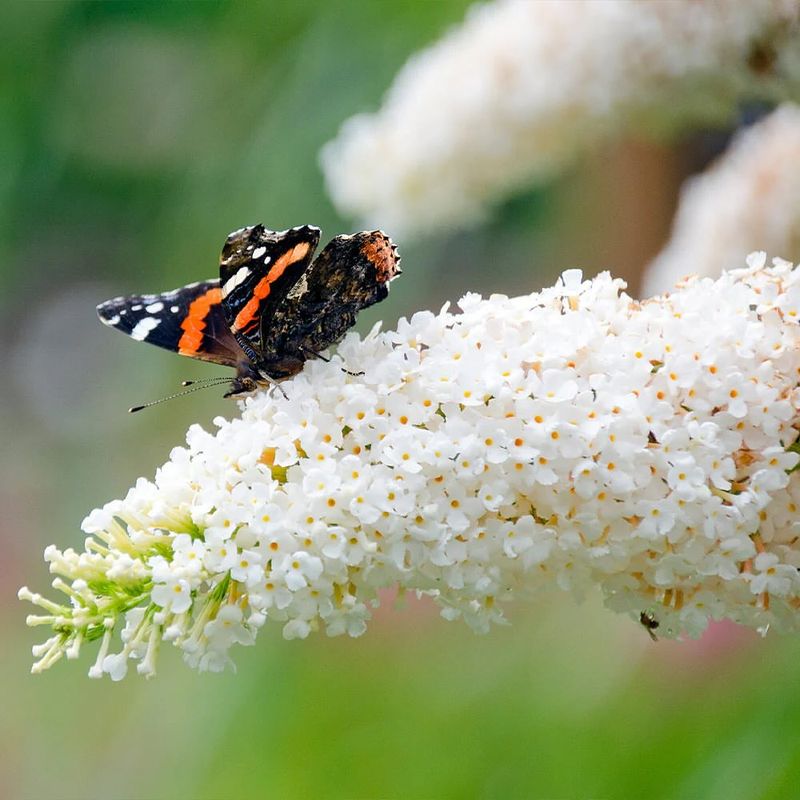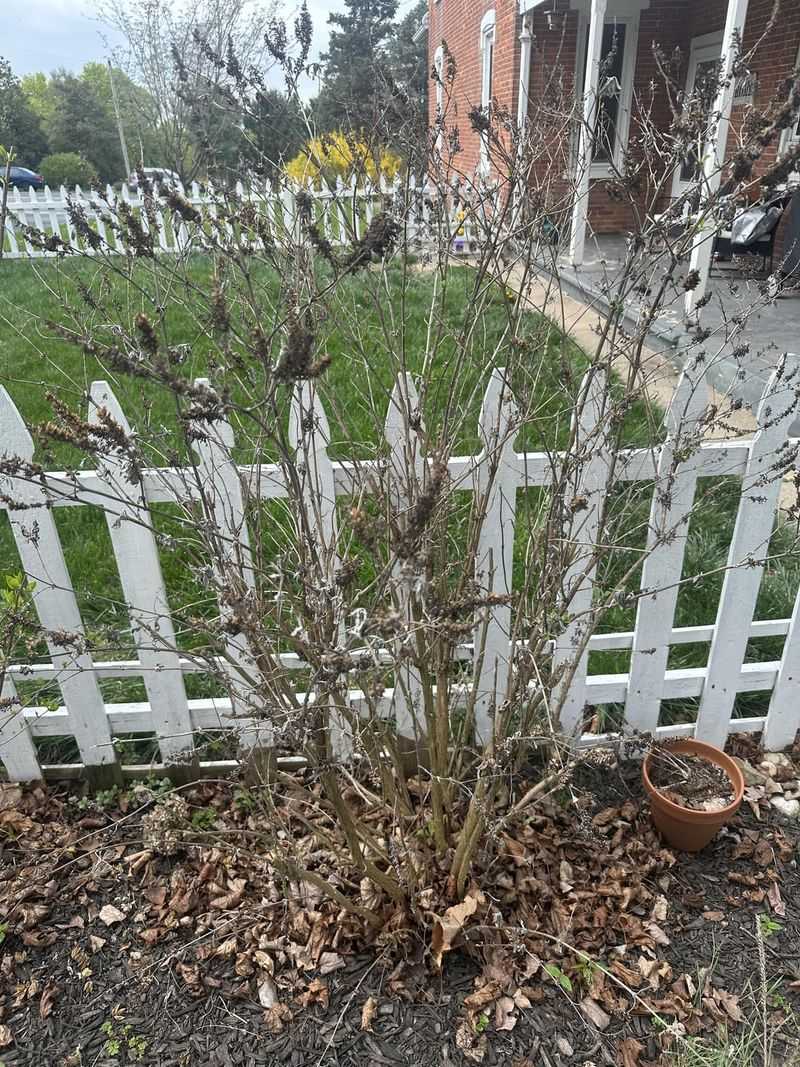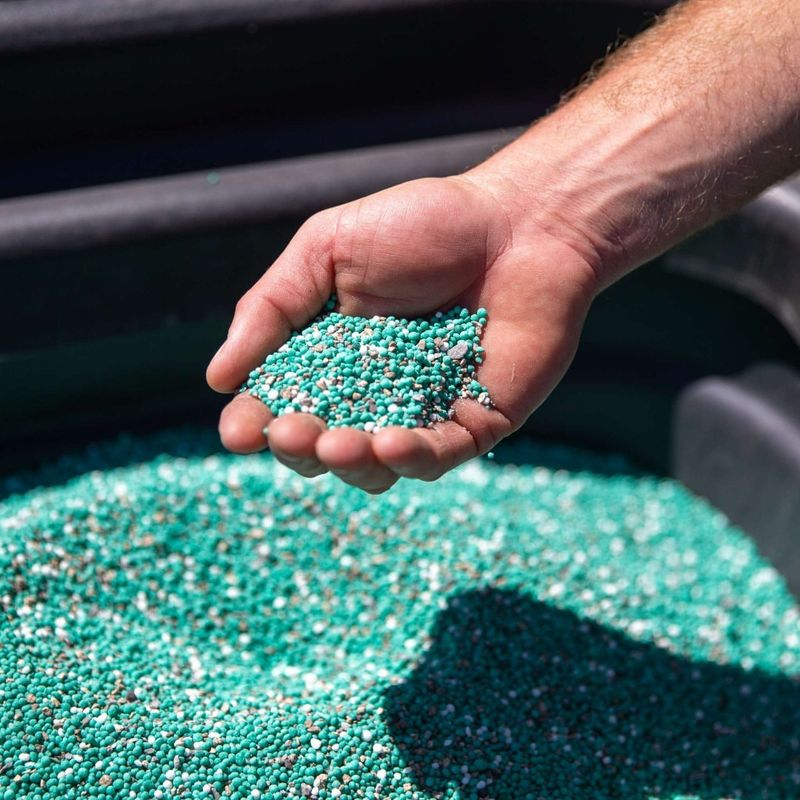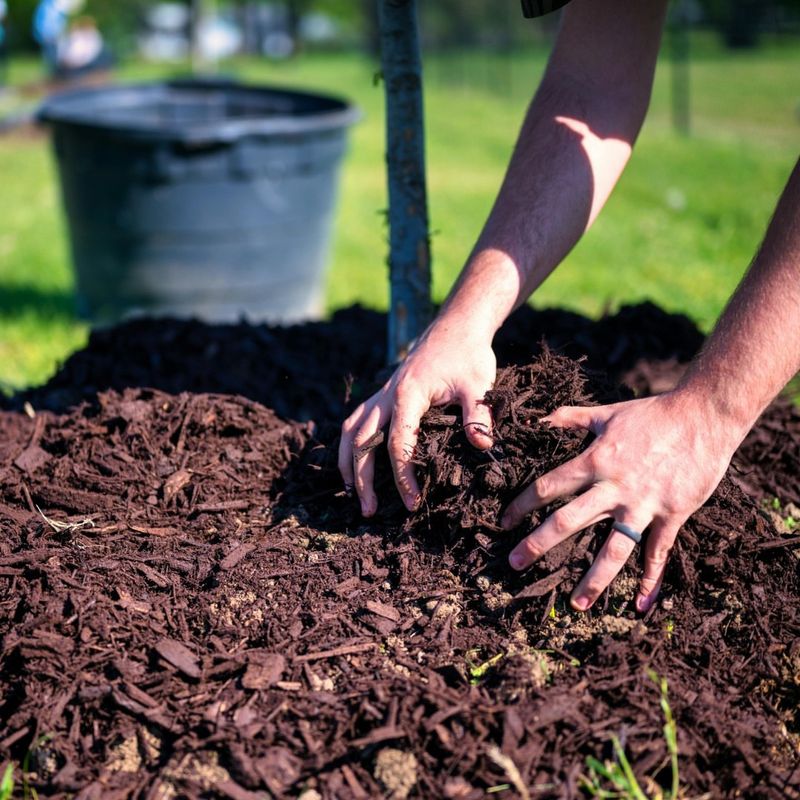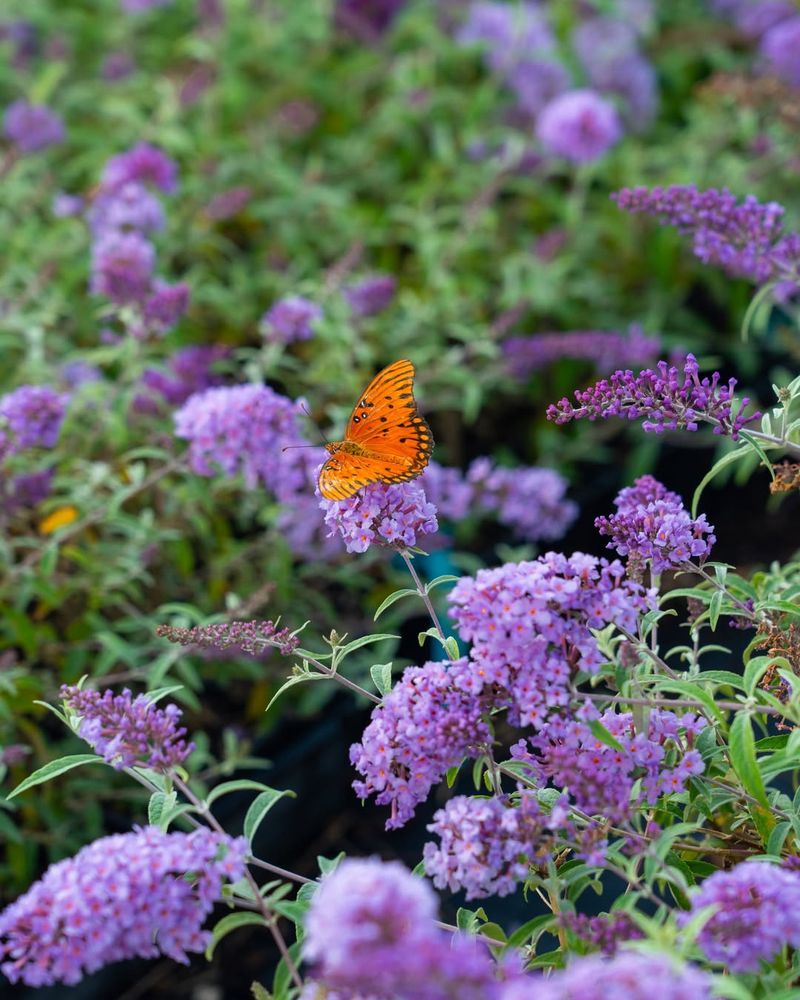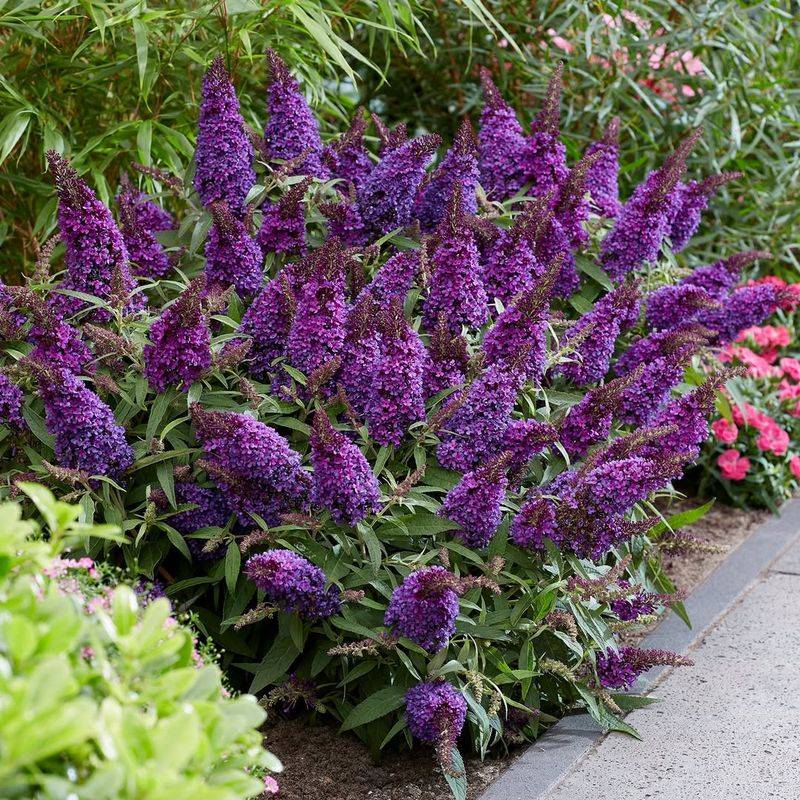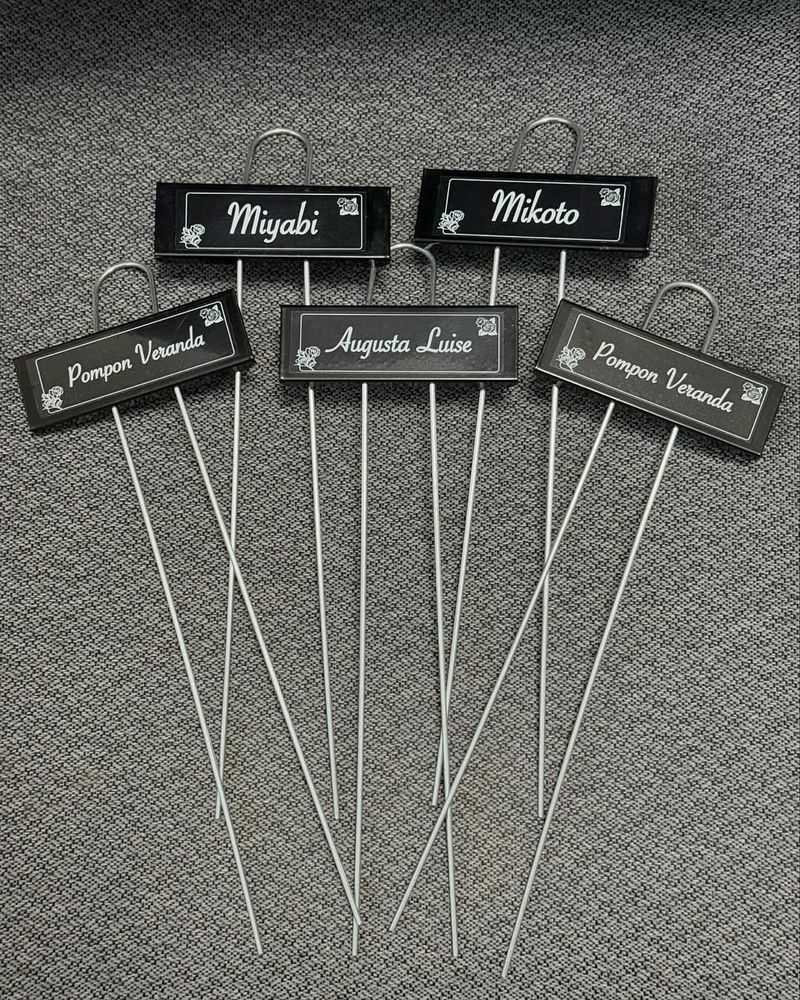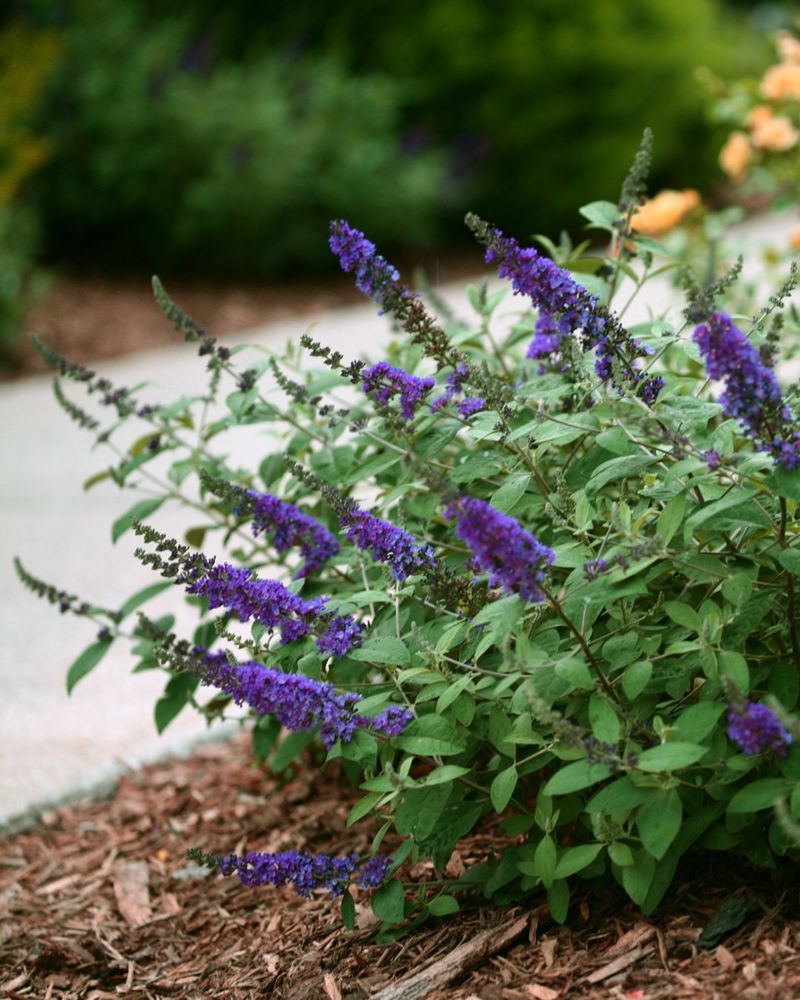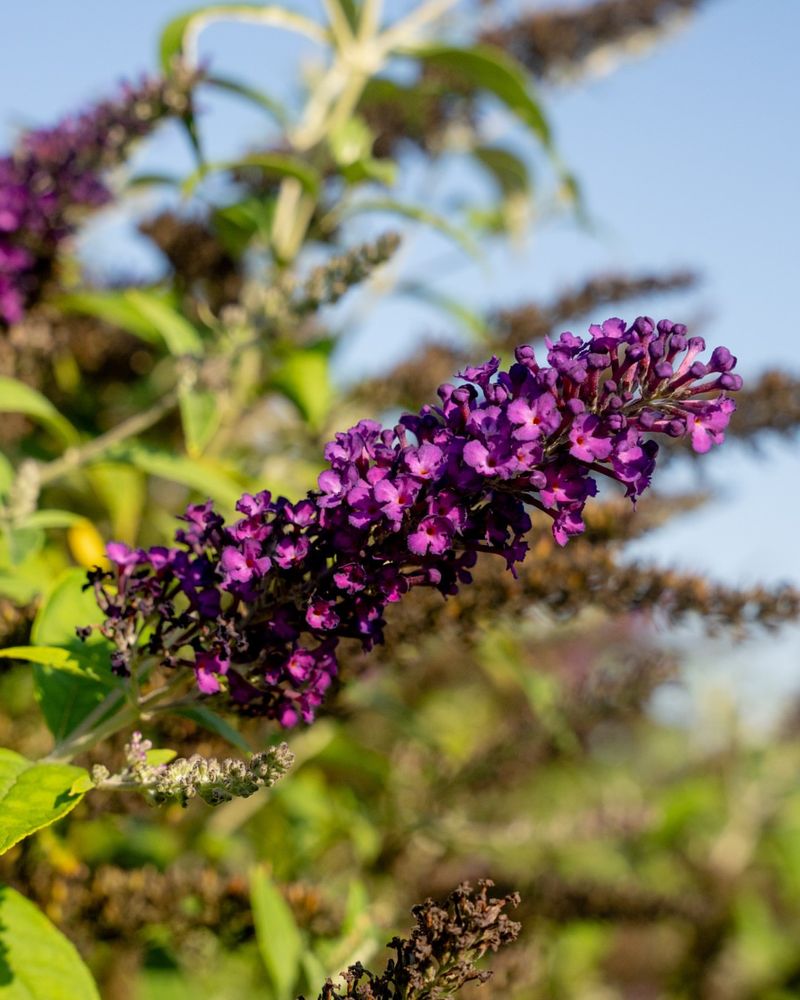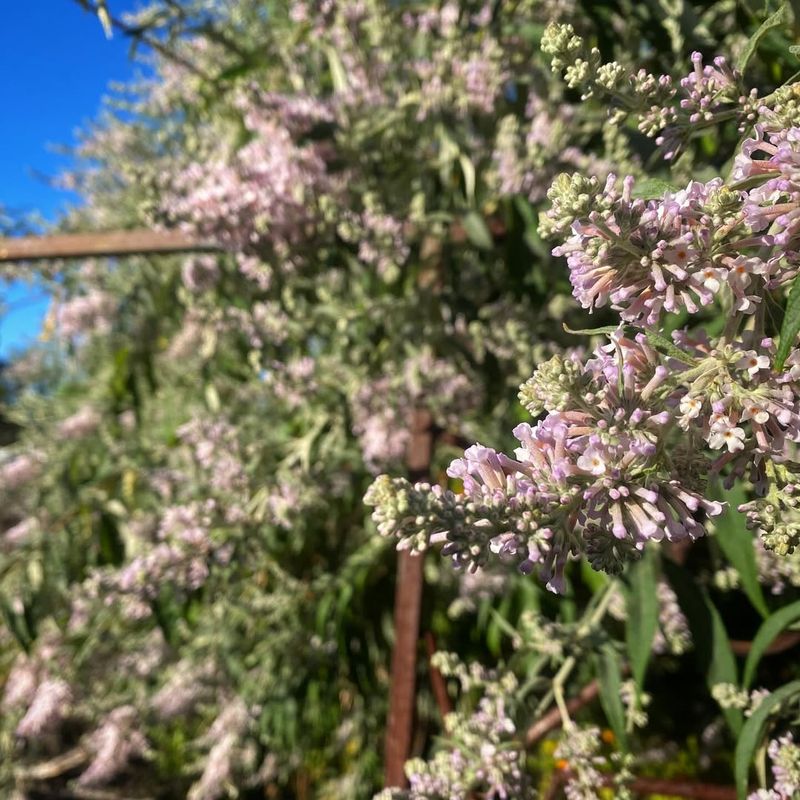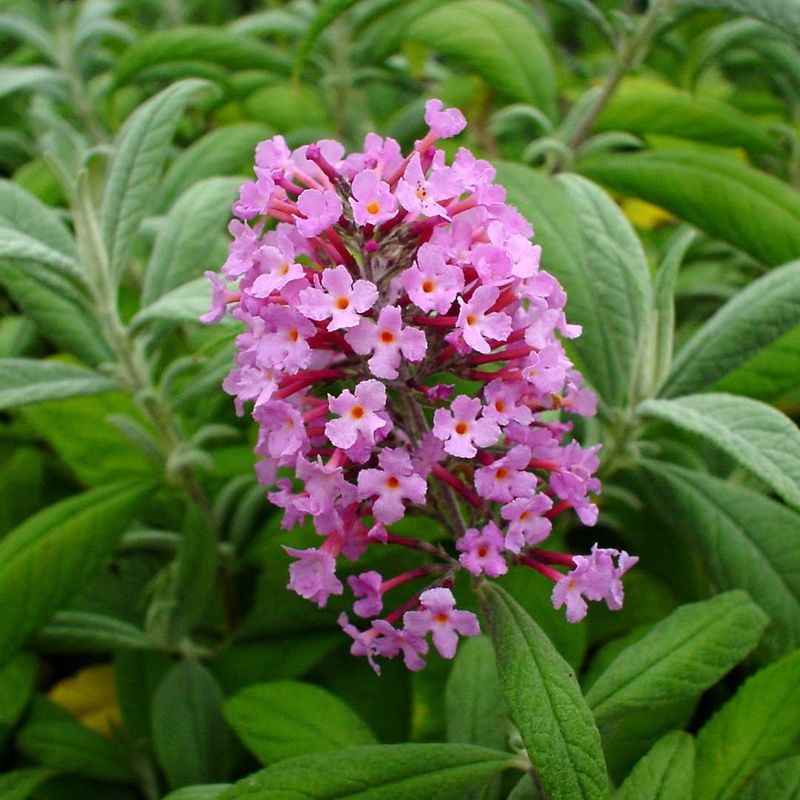Butterfly bushes are favorites for their colorful blooms and pollinator-friendly nature—but keeping them in top shape takes a little know-how. Pruning plays a big role in encouraging fresh growth, more flowers, and a well-shaped plant that lasts through the season.
This guide covers 24 essential tips for pruning your butterfly bush at the right time and in the right way. From how much to cut to when to do it, these tips will help you get the most blooms and keep your garden buzzing.
1. Timing is Everything
When it comes to cutting back those branches, timing can make all the difference. Butterfly bushes thrive when pruned at the right moment. Ideally, aim for early spring before new growth starts. This timing allows the plant to channel its energy into new, healthy shoots.
If you miss the spring window, don’t worry too much. Late winter is your next best bet. Remember, pruning too late in the season might hinder flowering. Plan your garden tasks wisely and your bushes will thank you with a colorful display.
2. Tools of the Trade
Choosing the right tools can transform your pruning experience from frustrating to fabulous. A sharp pair of pruners is your best friend when trimming butterfly bushes. Invest in a quality pair that fits comfortably in your hand.
Don’t forget the gloves! Protecting your hands from thorny branches is crucial. For thicker branches, consider having a small saw nearby. Remember, well-maintained tools not only last longer but also make your job easier. Keep them clean and sharp for the best results.
3. Understanding Plant Growth
Knowing how your bush grows can guide your pruning decisions. Butterfly bushes typically grow new shoots from the base, which means cutting back old wood encourages fresh growth.
When you understand this process, you can strategically remove dead or overcrowded branches. This not only benefits the plant’s health but also enhances its aesthetic appeal. Keep an eye on the plant’s growth patterns, and soon you’ll be pruning like a pro.
4. The Art of Thinning
Thinning is all about balance. This technique involves selectively removing branches to improve air circulation and light penetration. For butterfly bushes, this means cutting out older, non-flowering wood to make way for new blooms. Focus on opening up the center of the plant.
A well-thinned bush allows pollinators to find flowers easily, enhancing its beauty and functionality in your garden. Remember, healthy airflow reduces disease risk, making thinning a vital step in your pruning routine.
5. Cutting Back Hard
Sometimes, a drastic cut is necessary. Butterfly bushes benefit from hard pruning, especially if they seem overgrown or have a lot of dead wood. Trim back the branches to about two feet from the ground.
This may sound harsh, but the plant will likely respond with vigorous new growth. Hard pruning rejuvenates older bushes, giving them a fresh start and encouraging a robust display of flowers. Don’t be afraid to go big with your cuts!
6. Mind the Shape
Creating a pleasing shape not only beautifies your garden but also promotes healthy growth. Butterfly bushes should have an open, vase-like form to ensure sunlight reaches all parts. When pruning, aim for symmetry and balance.
Remove any wayward branches that disrupt the overall silhouette. Keeping the shape in mind as you cut will help the bush grow in a controlled, attractive manner. Your garden will look tidy, and your plants will thrive.
7. Don’t Forget the Deadwood
Deadwood can detract from a bush’s appearance and health. Butterfly bushes, like many plants, accumulate dead branches over time. Regularly check for deadwood and remove it promptly. This not only improves the plant’s look but also prevents disease and pests.
Cutting out deadwood makes room for new, vibrant growth, allowing the plant to flourish. It’s an easy step, but one that has a big impact on your bush’s vitality.
8. Focus on the Flowers
Who doesn’t love a garden full of blooms? Butterfly bushes are known for their beautiful flowers. To get the most out of your plant, focus on promoting flower growth. Prune spent blooms regularly to encourage more flowers.
This process, known as deadheading, redirects the plant’s energy into producing more blooms rather than seeds. It’s a simple task that pays off with a more vibrant garden. Plus, more flowers mean more butterflies!
9. Tackle the Suckers
Suckers, the unwanted shoots that sprout from the base, can drain your bush’s energy. Addressing these is crucial for a healthy butterfly bush. Regularly check near the base for suckers and remove them right away.
By doing this, you ensure that the plant’s energy is focused on the main stems and flowers. While it might seem tedious, tackling suckers keeps your bush strong and thriving. Plus, it helps maintain a clean look in your garden.
10. Check for Pests
Bugs are a gardener’s nemesis. A regular check for pests can save your butterfly bush from unnecessary stress. Inspect leaves and stems for signs of insects, such as holes or sticky residue. If you spot any, take action with appropriate treatments.
Healthy plants are less susceptible to pest damage, so keep your bush in top condition with regular pruning. A pest-free plant is a happy plant, and happy plants make beautiful gardens.
11. Understanding the Seasons
Gardening isn’t static; it’s an ever-changing process that mirrors the seasons. Butterfly bushes have different needs throughout the year. Understanding these seasonal shifts helps guide your pruning practices. In spring, focus on encouraging new growth.
Summer is for maintenance, while fall involves preparing the plant for winter. By aligning your pruning schedule with the seasons, you’ll support your bush’s health and beauty year-round.
12. Avoid Over-Pruning
Less can be more when it comes to trimming. Over-pruning butterfly bushes can lead to stress and reduced flowering. Aim to remove no more than a third of the plant at a time.
This restraint allows the bush to recover and grow back stronger. While pruning is beneficial, too much can do harm. Keep your cuts strategic and your plant will reward you with lush foliage and plentiful blooms.
13. Fertilize After Pruning
Give your bush a little post-pruning boost. Fertilizing after trimming helps nourish the plant, supporting new growth and flower production. Choose a balanced fertilizer and apply it according to package instructions.
This extra care enhances the bush’s health and vigor, leading to a more vibrant garden display. Remember, a well-fed bush is a happy bush, ready to burst into bloom once more.
14. Water Wisely
Hydration is key. After pruning, your butterfly bush will need adequate water to recover and grow. Focus on watering the roots, ensuring they receive enough moisture without being waterlogged.
A deep soak encourages stronger root development, which translates into a healthier plant overall. Remember, consistent watering is crucial, especially during dry spells. Your efforts will result in thriving, resilient bushes.
15. Mulching Matters
Mulch acts as a protective blanket for your shrub’s roots. After pruning, apply a layer of mulch around the base. This helps retain moisture and suppress weeds.
Choose organic mulch like shredded leaves or bark, which will decompose and enrich the soil over time. Not only does mulch provide practical benefits, but it also gives your garden a tidy, finished look. It’s an easy step that packs a punch in plant care.
16. Consider the Climate
Climate plays a significant role in how you care for your plants. Butterfly bushes need different care depending on your region’s climate. In colder areas, consider extra protection during winter. In hot climates, ensure your bush gets enough water.
Understanding your local climate and adapting your care routine accordingly ensures your plant thrives, no matter the weather. It’s all about working with nature, not against it.
17. Watch Out for Disease
Like all plants, these bushes can fall prey to diseases. Regular inspections keep your butterfly bush healthy. Look for signs like discolored leaves or unusual spots.
If you detect any issues, act swiftly with appropriate treatments. Pruning helps by removing diseased parts and improving airflow. Keeping your plant disease-free not only boosts its appearance but also ensures its longevity in the garden.
18. Caring for New Plants
New plants require special attention. Young butterfly bushes need careful pruning to establish strong growth patterns. Focus on removing any damaged or crossed branches.
This helps the plant direct its energy into healthy, upward growth. Early care sets the foundation for a robust plant that will flourish in your garden. It’s all about giving them a head start for a beautiful future.
19. Label Your Plants
Keeping track of your garden’s inhabitants can simplify your care routine. Labeling your butterfly bushes ensures you apply the right techniques to the right plants. This is especially useful if you have similar-looking species in close proximity.
Plant labels can prevent mix-ups, allowing you to focus on tailored care for each plant. An organized garden is an efficient garden, leading to better results.
20. Respect the Neighbors
Pruning isn’t just about the plant itself; it’s about the whole garden. Butterfly bushes should have enough space to grow without encroaching on neighboring plants. Respecting this space ensures all your plants have access to sunlight and nutrients.
Consider the overall layout and adjust your pruning to accommodate all garden residents. A harmonious garden contributes to the health and beauty of your outdoor space.
21. Reflect on the Past
Each gardening season is a learning experience. Reflecting on past pruning can guide your future efforts. Note what worked well and what didn’t with your butterfly bushes. Keeping a garden journal can be a valuable tool, helping you make informed decisions.
Each year, you’ll become more adept at anticipating your garden’s needs. It’s a journey of growth, both for the plants and the gardener.
22. Digital Resources
In the age of technology, help is just a click away. Numerous digital resources can enhance your butterfly bush care knowledge. From apps to online forums, the gardening community is vast and supportive.
Utilize these tools to stay updated on the latest pruning techniques and care tips. Sharing experiences with fellow gardeners can also provide new insights. Embrace technology and watch your garden flourish.
23. Know When to Stop
It’s easy to get carried away when you’re in the zone. Knowing when to step back is crucial. After pruning, take a moment to view your butterfly bush from different angles. Assess whether you’ve achieved the desired shape and health objectives.
Stopping at the right time prevents over-pruning and allows the plant to recover. Remember, sometimes less is more, and your patience will pay off in blooms.
24. Celebrate Your Success
Gardening is hard work, and your efforts deserve recognition. After a successful pruning session, take a moment to celebrate your achievement. Whether it’s sharing a photo with friends or simply enjoying the view, acknowledging your hard work is rewarding.
A thriving butterfly bush is a testament to your dedication and skill. Enjoy the vibrant blooms and the satisfaction of a job well done.

